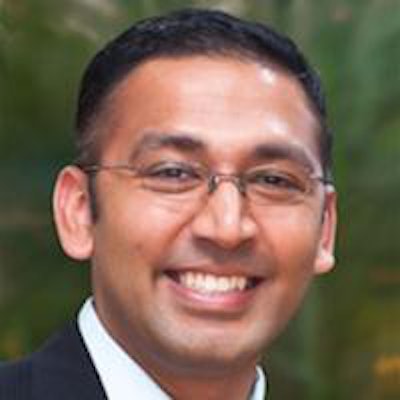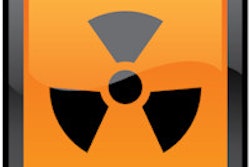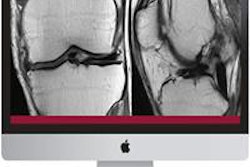
A new program aimed at infusing a dose of imaging physics into the early training of radiology residents has improved their understanding of both medical physics and radiology, according to an article in the Journal of the American College of Radiology.
Residents who attended physics training sessions said the lectures were enjoyable and useful in improving their knowledge of physics. Moreover, raw scores on the American College of Radiology (ACR) in-service exam were one-third higher for residents who attended the five physics sessions, wrote author Dr. Akash Kansagra from the University of California, San Francisco (UCSF).
The short physics course (five didactic lectures) taught to new radiology residents led to better understanding of physics and more confidence in clinical image interpretation, and senior residents turned out to be effective teachers of imaging physics (JACR, October 16, 2013).
"I think the real value of the course is giving residents the vocabulary and the tools to understand the portions of physics knowledge that they don't really talk about when they're reading studies," Kansagra said in an interview with AuntMinnie.com.
Apples and oranges
In terms of subject matter, radiology and medical physics are as similar as apples and oranges. However, the importance of physics concepts to imaging protocols can't be overestimated in an era when optimizing protocols and minimizing radiation dose are paramount concerns.
 Dr. Akash Kansagra from UCSF.
Dr. Akash Kansagra from UCSF.
Despite the close relationship that young radiologists encounter between the two subjects, physics education is thought to be lacking in most residency programs today, Kansagra wrote.
When it is available at all, physics instruction generally focuses on preparation for part I of the American Board of Radiology's (ABR) qualifying exam in physics, which takes place long after the formative first year of radiology training, when exposure might do the most good.
But everything changed with the residency training overhaul, beginning with notice that the class of 2014 will be the first not to take the old physics board exam. Rather, physics would henceforth be part of the residency core exam given at the end of the third year. And it turned out that the UCSF program was able to move the physics education up earlier, allowing educators to engage residents when they were brand new in the program.
"It doesn't really make sense to wait until the third year to teach physics," said Kansagra, who is chief resident in UCSF's department of radiology and biomedical imaging. "You teach them the basics early on, with the hope that it will give them the knowledge right up front, and that they will continue to form connections between physics and radiology as they progress through training."
Physics in 5 easy pieces
The physics course for new residents consists of five weekly didactic lectures, each an hour in length, beginning during the first month of radiology residency. The course materials were created entirely by three senior residents, including Kansagra, Dr. Ricky Tong, Ph.D., and Dr. Michael Ohlinger, Ph.D. Kansagra served as course director, selecting content from standard reference texts, choosing instructors, and making logistical arrangements for each lecture.
The same residents taught the same courses the following year. The courses were taught in a central location at 6 p.m. to leave time for residents' clinical rotations.
Lecture topics represented a complete overview of imaging physics. A small sample is below:
- Lecture 1: atomic structure and x-ray interactions, linear attenuation, and dual-energy x-ray
- Lecture 2: projection radiography, geometry and magnification, scatter radiation, and dose modulation
- Lecture 3: imaging formation, data acquisition, reconstruction algorithms, and dose modulation
- Lecture 4: B-mode ultrasound, piezoelectric arrays, pulsed echos and repetition frequency, beam steering, focal zones, and frame rate
- Lecture 5: MRI, signal localization, pulse sequences, artifacts, and MRI safety
The course was offered in the 2011-2012 and 2012-2013 academic years to each member of the entering residency class, for a total of 26 postgraduate year (PGY) 2 residents.
Gauging the results
The teachers distributed anonymous course evaluations at the end of the course and after each resident had completed at least one CT-based rotation. In all, 90% of participants reported subjective improvement in their knowledge, and 75% reported an increased interest in imaging physics.
On the other hand, the residents also responded that the training had less of an effect on their daily clinical work. Just 55% reported an improved ability to perform studies appropriately, and the rest of the participants were neutral, Kansagra wrote.
Fully 80% of respondents thought the course was worth the time required, but 20% said it was not -- with many of them citing the need to "settle into residency" before starting physics training. Still, 90% of respondents said they would recommend the course to future residents, though only 35% expressed an interest in teaching it.
"The whole goal is once a new generation comes up, we'll pass it on down to the next crew," Kansagra said.
Resident teachers a hit
The respondents applauded the senior residents as good teachers: 60% said the lectures were of better quality and 70% said they were more enjoyable than lectures given by faculty members, because the resident teachers, being more or less peers, were less intimidating to the first-year residents.
As a secondary measure of performance, raw scaled scores on the physics exam were also recorded anonymously. The scores of residents who started training in 2010 and did not complete the physics course were compared with the scores of students who started in 2011.
In this measure, residents who did not take the course had a raw scaled score of 44.7 (n = 11; standard deviation, 15.8), compared with scores of 63.8 (n = 14; standard deviation, 12.9) for residents who completed the physics course. Some PGY3 residents' scores were not available, Kansagra cautioned.
Were these improvements demonstrably related to the teaching of physics, or were they related to a variety of factors?
"It's hard to say in a small study of a handful of residents," Kansagra said, acknowledging the "huge changes across the board in how residents learn" in the past couple of years that may have steered the raw scaled scores upward even without physics training.
In any case, he said, "We're encouraged by the results, and frankly, with only about 13 to 14 residents per class, it doesn't take more than for a small handful of residents to be more inclined to learn physics -- that in itself could affect short-term exam scores. Even independent of the actual exam scores, residents subjectively felt they had a better understanding, and that really is the thing that motivates me."
What sections were the residents most interested in? "I think they particularly liked the MRI physics course; that's a topic that residents find a little more challenging than other subjects right up front," Kansagra said. "They enjoyed the detail on x-ray production and the nitty-gritty of how we actually create x-rays. That's a little more physics-heavy, and something I think residents have been a little leery to get too involved in because it's a little more complicated."
Interestingly, he said, CT dose reduction was not such a hot topic for them despite its enormous importance. This could be because CT dose reduction is the one physics lesson they receive over and over again in today's imaging environment. As a result, residents have a good working knowledge of CT dose reduction just by being on service.
Absent from the curriculum was an introduction to the physics of nuclear imaging and mammography, Kansagra cautioned. Residents at the institution are often not exposed to nuclear imaging and mammography until the third year of residency, limiting opportunities to learn these physics subjects and radiology together.
This successful course could serve as a blueprint for training programs looking to redesign their physics curriculum in light of the new ABR core exams, he concluded.



















